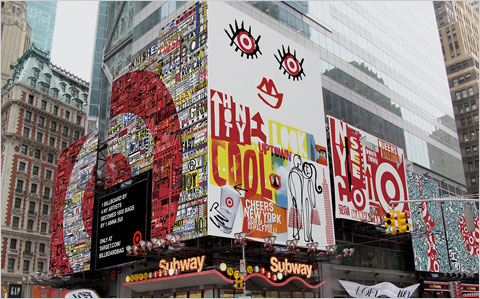 I recently came upon a Packaging Digest story that referenced a Flintstones commercial for Winston cigarettes. I guess that shouldn’t be too surprising now that we’ve been exposed to AMC’s Mad Men where smoking was pretty much ubiquitous at the offices of Sterling Cooper (circa 1960). The Flintstones (1960-1966), much like The Simpsons today, ran in prime time and was considered adult fare, so it really was a non issue.
I recently came upon a Packaging Digest story that referenced a Flintstones commercial for Winston cigarettes. I guess that shouldn’t be too surprising now that we’ve been exposed to AMC’s Mad Men where smoking was pretty much ubiquitous at the offices of Sterling Cooper (circa 1960). The Flintstones (1960-1966), much like The Simpsons today, ran in prime time and was considered adult fare, so it really was a non issue.
I’ll admit that I was impressed how well Fred and Barney sold the benefits of Winston such as its special filters and its rich tobacco that’s “specially selected” and “specially processed.”
There was something about that commercial that got my attention. I wondered what would have happened if Edward Bernays worked for Winston in the 60s instead of the American Tobacco Company (Lucky Strike cigarettes) in the 20s.
A Step Back in Time: By the mid-1920s, smoking had become commonplace in the United States… for men. That’s right. Even though women had just won their right to vote, they still were not allowed to smoke in public. In fact, in 1922 a woman from New York City was arrested for lighting a cigarette on the street.
The American Tobacco Company felt there was untapped potential when it came to women and smoking, so they hired Edward Bernays (the “Father of Public Relations”) to find a way to change public perception.
Bernays got permission from his client to hire a psychoanalyst, Dr. A.A. Brill, to find out more about the psychological basis for women smoking. Dr. Brill determined that cigarettes which were usually equated with men, represented torches of freedom for women.
With that in mind, Bernays selected Easter Sunday, a day which he said celebrated “freedom of spirit,” as the day for a simple “Torches of Freedom” demonstration. During the Easter Parade down 5th Avenue in New York City on March 31, 1929, he got women to light up and to stroll from 34th to 57th while smoking away.
The story got picked up in the New York papers, with the news quickly spreading across the nation. Bernays claims that within six weeks, women were allowed to smoke in public. You can watch a video of Bernays discussing the campaign here.
Thinking back to that Winston ad, wouldn’t it have been funny if Wilma and Betty were the ones taking a smoke break?
###
Post note: In January 1971, cigarette advertisements were banned on television. Also, here’s a link to post that runs down the history of cigarette ads on television.










Speak Your Mind